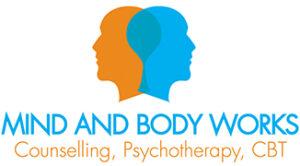Early Infant attachment experiences and how adult relationships are ruled by them.
Attachment is the first and most important relationship in a person’s life. When the developing child doesn’t receive good-enough parenting growing up that child becomes emotionally disturbed.
Examples of situations where good-enough parenting may be absent are:
- in an alcoholic or substance abuse family
- with a depressed mother
- in cases of separation or abandonment
- psychotic parents
- physical, emotional or sexual abuse
- neglected or scape-goated child
Attachment can be described as the relationship or bond that forms between the infant and the caregiver (usually the mother). Adult relationships are ruled by the same experiences of that infant /mother relationship.
The different types of attachment are:
- Secure
- Insecure (detached/Avoidant)
- Insecure (resistant/ambivalent)
- Insecure (disorganized/disoriented)
Secure Attachment
Secure attachment is when there is a warm, nurturing, loving, secure relationship between infant and caregiver. The caregiver is emotionally available to the child. The infant’s needs are met on every level, for example, feeding, soothing, caring and loving. This enables the child to grow emotionally and socially, and separate out from the caregiver, carrying these experiences into healthy adult relationships. They have more intimate relationships. They also find it easy get close to others and are comfortable depending on them and having others depend on them. They have deep meaningful relationships and do not worry about being abandoned and are not worried about someone getting to close to them.
Resistant/Ambivalent Attachment
With resistant/ambivalent attachment type the infant is wary of strangers. The child is very upset if mother is not there but is not consoled when she returns even if she tries to comfort the child. The infant both seeks and avoids contact with mother at different times. The caregiving is inconsistent. The person with this attachment type is afraid of but wants and desires intimacy, but cannot trust others and feels uncomfortable in relationships and will resist contact with people. They have low self- worth and low self- esteem issues. They may be still struggling to please their parents or are still angry with them and are often confused. They worry that their partner does not really love them and that the partner will not want to stay with them. They frighten people away by wanting to completely merge with a partner. They may be anxious and depressed also.
Detached/Avoidant Attachment
With detached/ avoidant attachment the infant avoids contact with mother especially after an absence, the infant does not seek out contact with mother and treats the mother the same as a stranger. The infant is often rejected by the mother. With this type of attachment the person feels that close relationships are not important. They may be isolated from peers. They prefer not to depend on other people. They seek out types of relationships where they don’t have to be intimate with others being uncomfortable if someone gets too close to them. They also hide and suppress their feelings. They become sexually active early and do not have supportive friendships.
Disorganised/Disoriented Attachment
With disorginazed/disoriented type of attachment the infant is confused and afraid. The infant will move towards mother for comfort but will also avoid looking at her at the same time. The individual with this type of attachment wants intimate close relationships but never achieves the desired level of closeness. They worry about not being valued, as much as they value other people, and they tend to be impulsive, worry, and display high levels of emotions in their relationships. They are also anxious and depressed.

